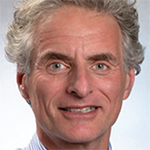
Image Credit: rnl/shutterstock.com
Updated Oct. 22, 2015 (revised to delete inaccurate statistics)
The cold, hard facts: This year’s rheumatology fellowship applicant pool resembles those of prior years. It is extremely diverse; every continent is represented, save Antarctica. It is somewhat larger, due in part to the growing influx of graduates from the cluster of Caribbean-based medical schools, where sprawling class sizes (with as many as 600 students enrolled per year) easily dwarf their North American counterparts. Yet, once again, much to my chagrin, the Year II rheumatology course that I direct at my medical school has failed to inspire even a single student to select rheumatology as their career choice. Harvard medical students rarely enter our specialty; nowadays, it seems that the number of students needed to find a single future rheumatology fellow is about 1,500.
Sadly, I am not the only fellowship program director dealing with this drought. American-trained medical students seem impervious to our métier. For the past several years, the growth of the national rheumatology applicant pool has been anemic, and lacking the influx of foreign trained students, the numbers would be far worse.
Fact: The likelihood of a medical student choosing rheumatology is much greater if that student graduated from a Caribbean, Middle Eastern or Indian medical school rather than an American one.1 Recently released data from the Association of American Medical Colleges (AAMC) demonstrate that for the 2013–14 academic year, about 48% of all rheumatology fellowship applicants were alumni of international medical schools. Only nephrology (68%) and endocrinology (54%) programs enrolled a higher number of foreign trainees. These percentages far exceed the proportion of foreign medical graduates (25%) training in all residencies and fellowships.
The likelihood of a medical student choosing rheumatology is much greater if that student graduated from a Caribbean, Middle Eastern or Indian medical school.
In sharp contrast, less than 5% of all dermatology residents and only 2% of all orthopedic trainees are foreign graduates, suggesting a passion for these disciplines among American medical students.1
Our orthopedic friends must be doing something right. Based on survey data, nearly half of the students entering medical school who selected orthopedics as their likely career choice go on to matriculate in this residency.1 Another specialty with such steadfast devotion is dermatology, in which 40% of entering students who chose “dermatologist” as their likely occupation, achieved this goal.
Dermatology and orthopedic trainees rank at the top of their medical school classes. Based on their Medical College Admission Test (MCAT) and U.S. medical licensure exam (USMLE I and II) scores and on the number of research experiences and abstract presentations during medical school, students headed to orthopedics are second to none.
Much has been written about the allure of dermatology among medical students. In some years, about 10–15% of the Harvard graduating class apply to this specialty. Despite this surfeit of riches, some dermatologists confide their relative unease about this oversized interest in their craft. Too often, they have observed how after professing an unstinted commitment to medical dermatology during their application interviews, many of their residents make a beeline for the cosmetic angle of skin care.2
Is there a way to convince students to take that fork in the road and head toward us?
In a similar vein, there is a heightened interest and an intense competition for training slots in radiology, ophthalmology and anesthesiology. Along with dermatology, the first letters of these four specialties form the often cited mnemonic, ROAD, cynically viewed by some as the road to riches. Nowadays, lifestyle and financial considerations affect career choices to a greater degree than they previously have.2 Although rheumatology can compete with the former, it struggles with the latter. But recent surveys identify rheumatologists as being the happiest—though clearly not the wealthiest—doctors, proving once again that money does not buy happiness. (See Rheuminations: Life, Happiness, and the Pursuit of Rheumatology, September 2012.)
Let’s face it: The practice of rheumatology is facing some fairly stiff headwinds that threaten our ability to grow, prosper and thrive as a specialty. Despite the best intentions of the ACR, the Rheumatology Research Foundation and fellowship programs to recruit the next generation of rheumatologists, our workforce census remains flat.3
Rheumatologists may be among the happiest doctors, the quality of our lifestyle is second to none, and our work is intellectually stimulating, yet we are faced with this paradox: Why can’t we expand our workforce? We are currently attracting the equivalent of about one U.S.-trained medical student per medical school per year.
To sort through this conundrum, it may be best to start at the beginning: Who gets accepted into medical school? How much exposure is there to rheumatology? How can we get into the minds of our students and generate passion and excitement for the dazzling array of connective tissue diseases, principles of musculoskeletal medicine and concepts of autoimmunity that blend together to create our vocation? Or are we doomed to failure because medical students inherently prefer disciplines that seem better defined and offer greater remuneration? Is there a way to convince students to take that fork in the road and head toward us?
Getting In
It’s fair to say that becoming a doctor requires a solid commitment based on a passion for learning and a willingness to help and heal others. Getting into medical school is akin to a steeplechase, with lots of hurdles to jump and ditches to dodge. In contrast to business and law schools, where interest varies inversely with the state of the economy, applications to medical school hold steady regardless of economic conditions.4 Aside from demonstrating evidence of success in requisite courses, including the much-dreaded organic chemistry, and a flawless career as an undergraduate student with a near-perfect grade point average, to pass muster, the applicant’s biography should be replete with evidence of a substantial commitment to volunteerism.
Despite the best intentions of the ACR, the Foundation & fellowship programs to recruit the next generation of rheumatologists, our workforce census remains flat.
And of course, every admissions committee will carefully parse the applicant’s MCAT score. Unlike the standardized tests used by other professional schools, which focus on aptitude rather than subject knowledge, the MCAT provides a reasonable assessment of the student’s knowledge of some of the scientific principles that are prerequisite to the study of medicine. Beginning this year, the MCAT has been changed to reflect some of the realities of modern-day medical practice. There will be a new section on social and behavioral sciences, covering introductory psychology and sociology concepts, and introductory biology concepts as they relate to mental processes and behavior, lengthening the test from its current five hours to seven hours.
About 40% of applicants gain acceptance to American medical schools. For those who are denied, other options include a few select schools in Europe and Asia and a host of Caribbean-based medical schools that cater to North American applicants.
Generally speaking, most students who enter medical school graduate and go on to residency training. Occasionally, a student has second thoughts about their decision, usually toward the end of their first year. In earlier times, when anatomy and body dissection were prominent requirements, some students realized they did not have the heart or stomach to continue and dropped out. Among the most prominent was the billionaire investor and medical benefactor, Carl Icahn, whose name now adorns the Mount Sinai School of Medicine in New York. His disdain for anatomy convinced him to forsake the formaldehyde fumes of the New York University anatomy labs and head off to the antiseptic world of finance.5
Nowadays, other enticements may lure students away from medical school or residency training. This is especially critical in the San Francisco Bay area, where students are exposed to a tantalizing array of tech opportunities. How discouraging that students are abandoning the rich clinical experience that postgraduate training offers. After working so hard to get to this point, why do some students pack up and leave?
“I loved working with patients, but I looked around me and realized that I didn’t want the jobs of anybody who had ‘succeeded’ as a clinician,” recalled one graduate who chose a career advising health-tech startups.6 Really?
The New New Curriculum
Gone are the days when seemingly endless blocks of anatomy, histology, biochemistry or physiology competed for space in the grey matter of the freshman class. Nowadays, it is de rigueur for virtually all medical schools to begin clinical rotations at the start of freshman year. The trend gained considerable traction in the past decade, after some of the newly opened American medical schools began implementing this approach as a way to entice potential applicants. Days following the traditional white coat ceremony welcoming students to medicine, they are assigned to wards and clinics where they put their newly purchased stethoscopes, ophthalmoscopes and reflex hammers to good use.
I first heard about this novel approach during a lecture given by the dean in charge of curriculum design at the recently established Hofstra North Shore-Long Island Jewish School of Medicine at Hofstra University in Hempstead, N.Y. He described the excitement and enthusiasm of one student who had been assigned to ride in an ambulance on her first day of school.
She rode along to an apartment complex, where she witnessed, firsthand, a woman about her own age having a grand mal seizure and lapsing into a state of unconsciousness. During her hospital admission, it was discovered that this previously healthy young woman had seized because of rapidly developing renal failure.
What caused her kidneys to quit? Lupus nephritis. The dean was effusive in his praise of this student who tenaciously followed this patient in the hospital, at all her clinic visits and at her home, as her illness evolved over the course of the next 18 months. Through a stroke of serendipity, the clinical mentor assigned to her before the start of medical school happened to be an internationally prominent rheumatologist with a devotion to the study of lupus.
These are the types of experiences that may serve as game changers in our quest to capture the hearts and minds of medical students and residents. Right now, we are performing rather poorly, with over 99% of students choosing those other forks in the road, the ones leading them away from rheumatology.
As part of a curriculum redesign team at Harvard, we are about to put this theory to the test. Rheumatology, which used to be crammed into a 15-hour course held over four consecutive half-days, has been given ample breathing space. We have allied with our friends in dermatology, allergy and immunopathology to create a teaching adventure that will generously span six weeks. Out with the large lecture halls, and in with concept videos and flipped classrooms (see Rheuminations: Has Technology Depersonalized the Art of Medical Teaching? February 2015).
Can we, as rheumatologists, captivate the mind of the millennial medical student? If they want to learn dermatology, how about helping them explore the countless ways that lupus damages the skin? If they have a yen for orthopedics, they can learn how to manage various musculoskeletal ailments using a needle and syringe. And if they want to engage in long-term and highly rewarding relationships with their patients, putting all that knowledge they learned to excel in the new MCAT, they need look no further than rheumatology.
We may want to entice our millennial audience by playing some television clips featuring the eponymous Dr. House, that irascible, sharp-witted curmudgeon and brilliant physician. A modern-day Osler, this medical detective is idolized by the retinue of devoted trainees who hover over him on rounds as he hobbles down the hallways in search of answers for his patients, who have defied diagnosis. Perhaps House’s most famous line over the hundreds of episodes, uttered countless times with varying degrees of anger and frustration was, “It’s not lupus!”7,8 Sometimes though, it really is.
Class, welcome to rheumatology.
 Simon M. Helfgott, MD, is associate professor of medicine in the Division of Rheumatology, Immunology and Allergy at Harvard Medical School in Boston.
Simon M. Helfgott, MD, is associate professor of medicine in the Division of Rheumatology, Immunology and Allergy at Harvard Medical School in Boston.
References
- Association of American Medical Colleges.
- Singer N. The price of beauty: For top medical Students, an attractive field. The New York Times. 2008 Mar 19.
- Deal CL, Hooker R, Harrington T, et al. The United States rheumatology workforce: Supply and demand, 2005–2025. Arthritis Rheum. 2007 Mar;56(3):722–729.
- Edmonston P. In tough times, M.B.A. applications may be an economic indicator. The New York Times. 2008 Oct 6.
- www.invetopedia.com/university/greatest/carlicahn.asp.
- Farr C. Bay Area doctors quit medicine to work for digital health startups. KQED. 2015 Jul 17.
- Bloopers: It’s not lupus. House M.D.
- Finally! It’s a lupus diagnosis on House, M.D. Lupus Foundation of America. 2007 Nov 29.
Correction
It has been brought to our attention that some of the statistics that I originally cited in the article were wrong. The Doximity study analyzing the rates of medical students pursuing residency training following graduation was incorrect in claiming that Stanford and UCSF scored poorly. In fact, the opposite is true for both schools. Colleagues at both UCSF and Stanford confirmed that their students matriculate to residencies at very high rates, as one would have expected. Since completing my research for my article several months ago, I was unaware that these study results were challenged by these two schools and that the original data had been retracted. I apologize for the error and the misunderstanding.



